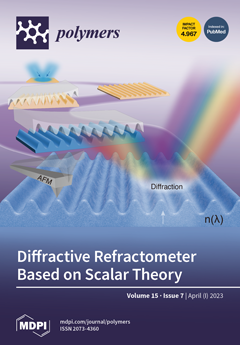Six Cd(II)/Mn(II)/Co(II)/Ni(II)/Zn(II) coordination complexes are formulated as [Cd
2(X
2−)
2(
μ3-O)
2/3]
n (
1), [Mn
2(X
2−)
2(
μ3-O)
2/3]
n (
2), {[Co
1.5(Y
4−)
0.5(4,4′-bpy)
1.5(OH
−)]·2H
2O}
n (
3), {[Ni(X
2−)(4,4′-bpy)(H
2O)
2]·4H
2O}
n (
4), [Zn(
m-bdc
2−)(bebiyh)]
n (
5), and [Cd(5-tbia
2−)(bebiyh)]
n (
6) (H
2X = 3,3′-(2,3,5,6-tetramethyl-1,4-phenylene) dipropionic acid. H
4Y = 2,2′-(2,3,5,6-tetramethyl-1,4-phenylene)bis(methylene) dimalonic acid, bebiyh = 1,6-bis(2-ethyl-1H-benzo[d]imidazol-1-yl)hexane,
m-H
2bdc = 1,3-benzenedicarboxylic acid, and 5-H
2tbia = 5-(tert-butyl)isophthalic acid) were obtained by hydrothermal reactions and structurally characterized. Complexes
1 and
2 have a 6-connected 3D architecture and with several point symbols of (3
6·4
6·5
3). Complex
3 features a 5-connected 3D net structure with a point symbol of (5·6
9). Complex
4 possesses a 4-connected 2D net with a vertex symbol of (4
4·6
2). Complex
5 is a 3-connected 2D network with a point symbol of (6
3). Complex
6 is a (3,3)-connected 2D network with a point symbol of (6
3)
2. In addition, complexes
1 and
4 present good photoluminescence behaviors. The electronic structures of
1 and
4 were investigated with the density functional theory (DFT) method to understand the photoluminescence behaviors.
Full article






